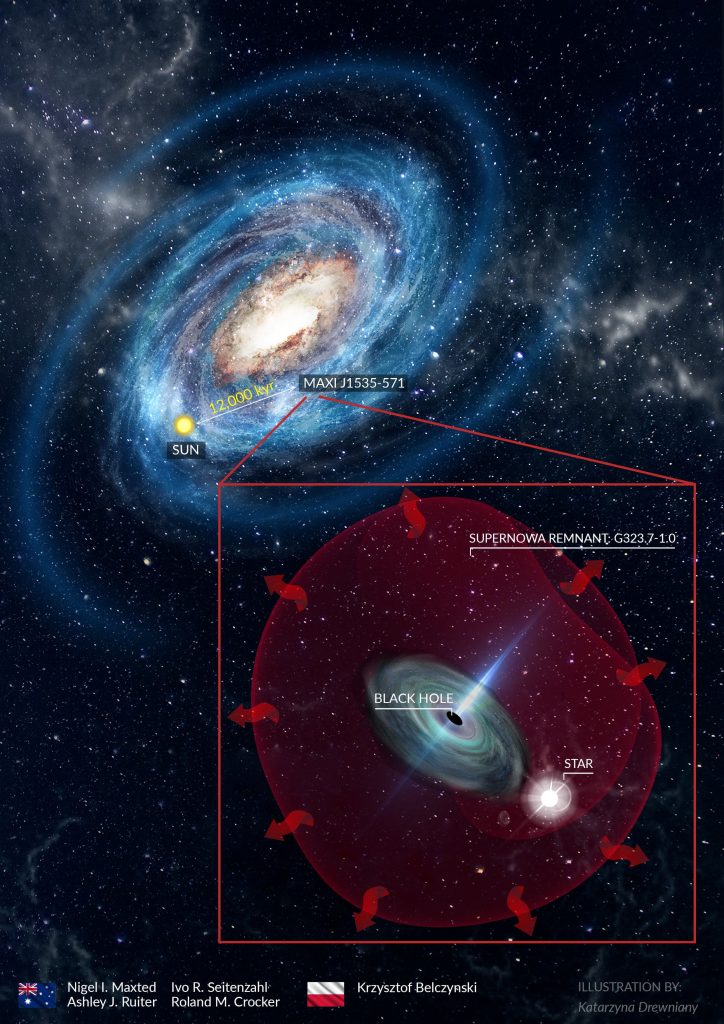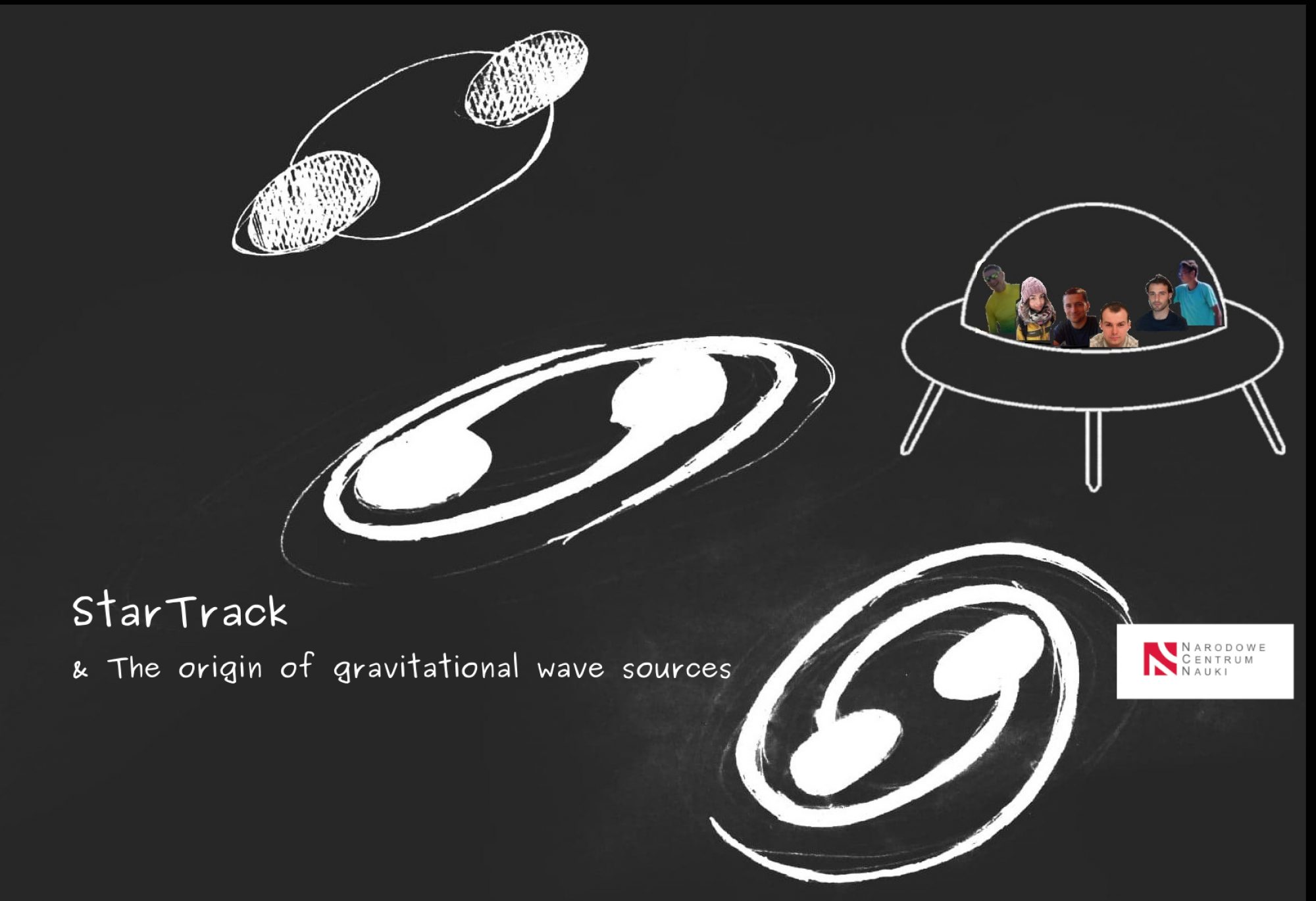Supernovae explosions end massive stars lives. It is believed that in these explosions star cores collapse to neutron stars or black holes while outer stellar layers are ejected into cosmic void, creating spectacular expanding shells. With modern telescopes a supernova is discovered pretty much every day. Some of supernovae remnants (these expanding shells) were connected with nearby neutron stars, thus confirming stellar evolution predictions. However, until now not a single supernova was connected with black hole formation. Australian-Polish team makes such connection for a distant (12,000 light years away from Earth) supernova remnant called G323.7-1.0. It appears that within this supernova remnant there is a binary system of two objects known as MAXI J1535-571: unseen small star (maybe twice as massive as our Sun) and a medium size black hole (about 5 times more massive than Sun). The unseen star feeds black hole with matter (from its outer layers) and as this matter spirals into the black hole it radiates in X-rays that are detected by some of our space observatories. Since the black hole is almost right in the center of expanding supernova remnant, and it is at the same distance as supernova, it must be that the supernova has created this black hole in the last 10-20 thousand of years. The team estimated that probability of finding a black hole by chance in the position of this supernova is less than 1 in 1000!
Link to paper:
https://ui.adsabs.harvard.edu/abs/2020arXiv201015341M/abstract

thousands years ago) relative to our Sun. In the expanding supernova remnant
(G323.7-1.0) a binary system (MAXI J1535-571) hosting a small star and a medium
size black hole is found. It appears that this is the first supernova known
to have formed a black hole.
